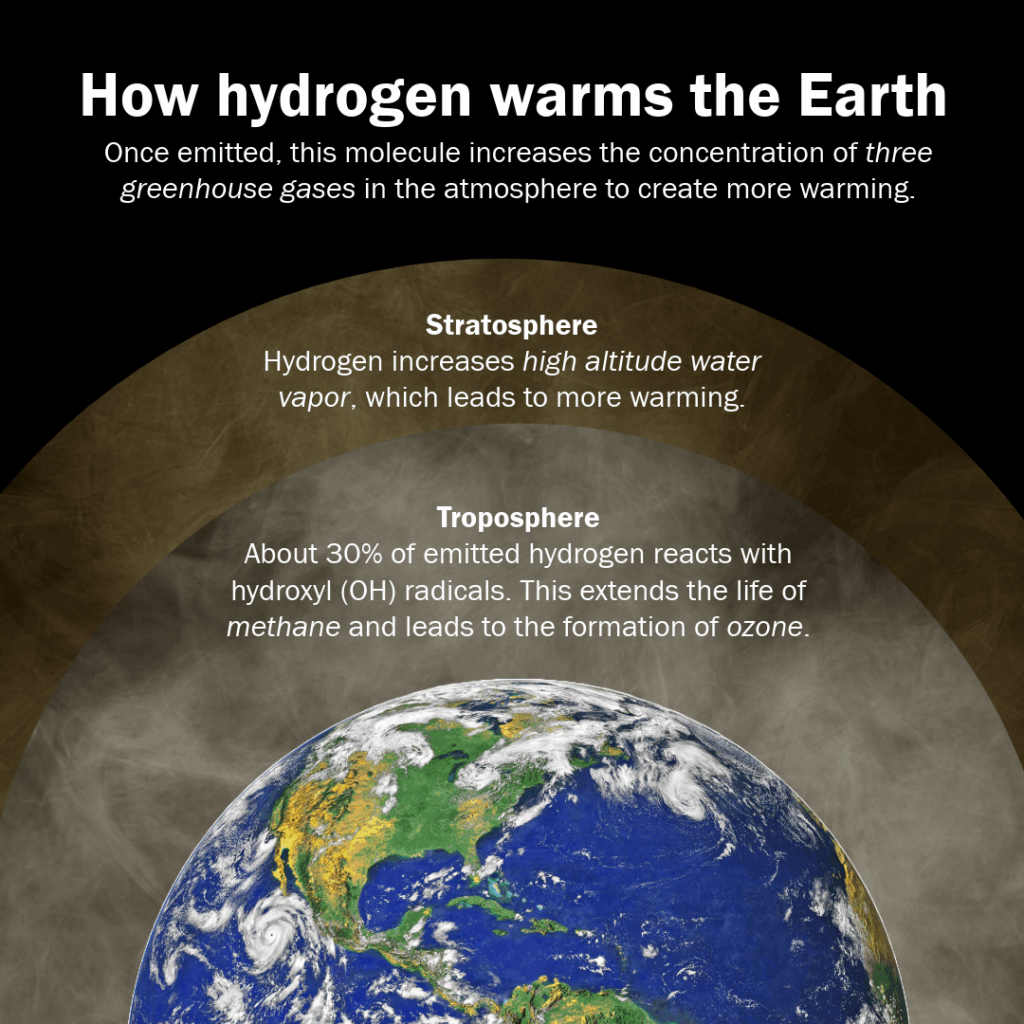As the world works towards deploying a cleaner energy future, governments and industry are investing in building a hydrogen economy to replace high greenhouse gas emitting energy sources in critical hard to decarbonize sectors. But as we prepare to deploy hydrogen at scale, we must ensure that our standards and policies are rooted in the latest science. Otherwise, we risk undermining the very climate benefits we seek.
Energy Exchange
Why wait to account for hydrogen’s warming impact in standards & policies when it will cost more later?
New science and technology uncover opportunities to speed up environmental progress
This piece originally appeared on our EDF Voices blog.
Both science and environmentalism are changing – driven more and more by more collaboration and rapidly improving technology.
These developments offer tremendous opportunities, as they can reveal urgent threats much more clearly – as well as the paths to address them.
Response to methane synthesis critiques
 A new paper published in Science last week is the culmination of an extensive amount of research conducted over the past six years examining methane emissions from the U.S. oil and gas supply chain. The study finds that the U.S. oil and gas industry emits 13 million metric tons of methane per year – 60% higher than the EPA Greenhouse Gas Inventory (GHGI) estimates. Some industry sources have questioned the conclusions drawn in the paper and the methods employed to which I respond below.
A new paper published in Science last week is the culmination of an extensive amount of research conducted over the past six years examining methane emissions from the U.S. oil and gas supply chain. The study finds that the U.S. oil and gas industry emits 13 million metric tons of methane per year – 60% higher than the EPA Greenhouse Gas Inventory (GHGI) estimates. Some industry sources have questioned the conclusions drawn in the paper and the methods employed to which I respond below.
The 25 co-authors of this Science paper represent 16 different research institutions. These experts were collectively responsible for generating most of the data analyzed and directly involved in writing the paper, which was subjected to a rigorous independent peer review as a condition of publication in one of the world’s top scientific journals.
Informed critiques are a valuable part of the scientific process. But the key issues raised by Energy in Depth (EID) and the American Gas Association seem to reflect a deep misunderstanding of the approaches used in the paper and the underlying data. Here, I explain the methods used to avoid bias and resolve differences among multiple data sets.
Finding Industry Fingerprints on Atmospheric Methane
 We’ve all seen TV detectives dust a scene for fingerprints. In a study in the journal Nature, a team of scientists did something similar, using carbon isotopes to identify the “fingerprints” of methane– one of the world’s most powerful climate pollutants in the atmosphere.
We’ve all seen TV detectives dust a scene for fingerprints. In a study in the journal Nature, a team of scientists did something similar, using carbon isotopes to identify the “fingerprints” of methane– one of the world’s most powerful climate pollutants in the atmosphere.
The study examined the isotopic signature from two types of methane emissions: biogenic (sources like wetlands, landfills and agriculture) and thermogenic (encompassing geologic seepage, activities associated with the oil and gas supply chain or coal mines).
The evidence suggests that not only are we significantly underestimating the share global methane emissions from thermogenic sources, we’re also underestimating how much comes from the production, delivery and use of oil and gas and the production of coal. Read More
STUDY: A Closer Look at Urban Methane Pollution
 The United States produces approximately 33 trillion cubic feet of natural gas each year. A majority of this gas is converted to electricity at power plants or used for industrial purposes, but about one third ends up making the journey from the well head, through underground pipelines, and into our homes and businesses. How much of this gas gets lost along the way—whether it’s through leaky equipment or other factors—is important because of the damaging climate impacts of methane pollution. And a new study published this week in Environmental Science and Technology is helping to expand our understanding of methane emissions in urban environments.
The United States produces approximately 33 trillion cubic feet of natural gas each year. A majority of this gas is converted to electricity at power plants or used for industrial purposes, but about one third ends up making the journey from the well head, through underground pipelines, and into our homes and businesses. How much of this gas gets lost along the way—whether it’s through leaky equipment or other factors—is important because of the damaging climate impacts of methane pollution. And a new study published this week in Environmental Science and Technology is helping to expand our understanding of methane emissions in urban environments.
The study—a multi-year collaboration led by Washington State University and included researchers from Aerodyne, the National Institute of Standards and Technology, GHD, Purdue and Pennsylvania State universities—used a variety of techniques to measure the rate at which methane is lost to the atmosphere in Indianapolis, Indiana.
Moving Up: New Accounting Shows Full Scale of Aliso Canyon and U.S. Methane Leaks
 A paper today in the journal Science, estimating emissions from the massive methane leak at Aliso Canyon, indicates that nearly 100,000 metric tons of methane escaped into the atmosphere over Southern California – more than previous estimates. The new findings come days after the Environmental Protection Agency released draft results of their updated accounting of methane emissions from the nation’s oil and gas supply chain that shows that emissions are up 27% above the agency’s early estimate.
A paper today in the journal Science, estimating emissions from the massive methane leak at Aliso Canyon, indicates that nearly 100,000 metric tons of methane escaped into the atmosphere over Southern California – more than previous estimates. The new findings come days after the Environmental Protection Agency released draft results of their updated accounting of methane emissions from the nation’s oil and gas supply chain that shows that emissions are up 27% above the agency’s early estimate.
The more we know about methane emissions, the higher they get. The new findings show not just the massive scale of the oil and gas industry’s methane problem, but also how critical it is to get the science right to both understand this source of a potent climate pollutant and reduce it. We know that cutting methane is one of the fastest, most cost effective ways to curb today’s warming, and when combined with critical efforts to reduce carbon dioxide pollution, substantial climate progress can be made. Read More











